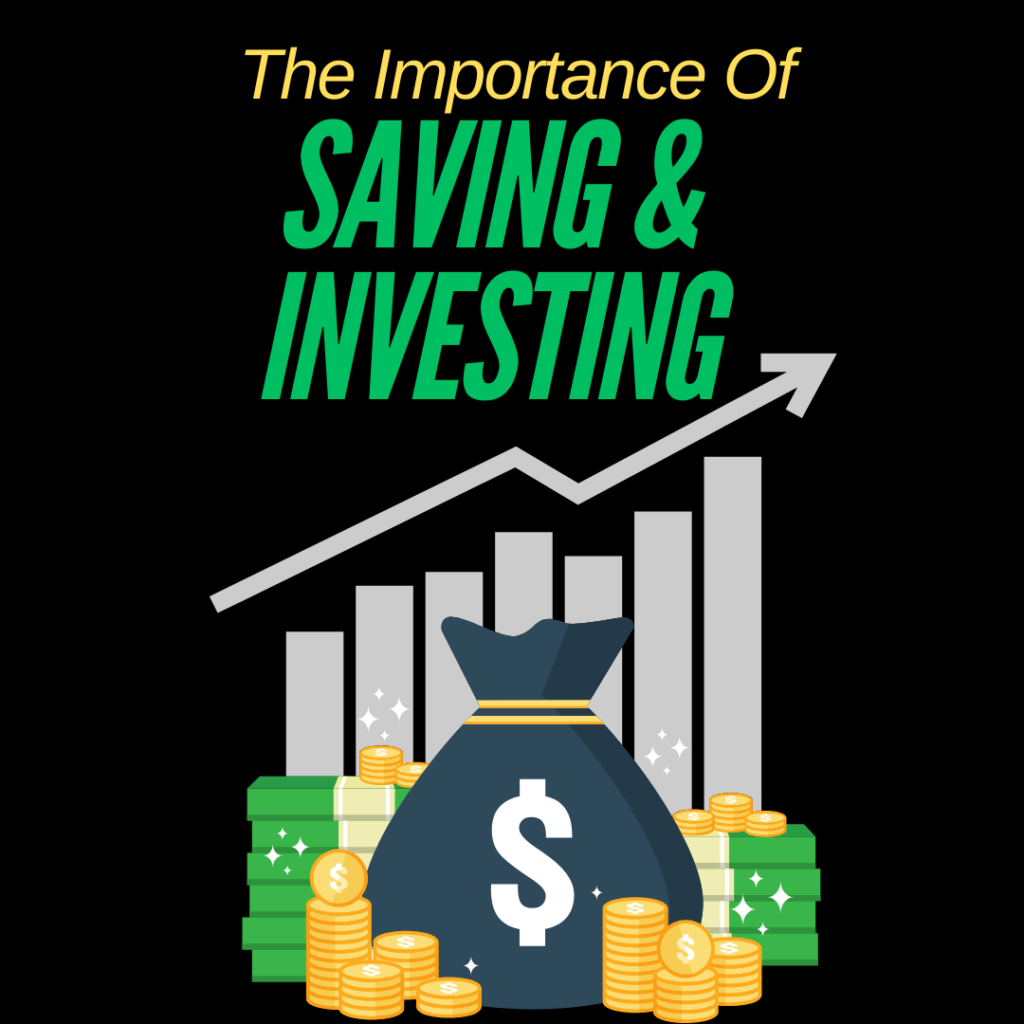The Importance of Saving and Investing

In today’s fast-paced world, securing your financial future has become more essential than ever. While spending on experiences and material goods can be tempting, building a solid foundation through saving and investing is crucial to achieving long-term financial security and stability. Whether you’re just starting out or looking to boost your financial knowledge, understanding the importance of saving and investing can set you on the path to financial success.
Saving is the first step to financial health and serves as the foundation for wealth building. It’s essential for several reasons. Firstly, having a savings fund can protect you from unexpected expenses, such as medical bills, car repairs, or even a sudden job loss, without falling into debt. Additionally, knowing you have a financial cushion can reduce stress and give you peace of mind, allowing you to focus on other aspects of life without constantly worrying about money. Savings also play a key role in reaching personal goals and planning for future expenses, whether you’re aiming to buy a car, go on a vacation, or save up for a home down payment. A good rule of thumb is to save at least three to six months’ worth of expenses in an emergency fund before turning your focus toward long-term investments.
While saving is essential for short-term needs and emergencies, investing is where your money has the potential to grow significantly over the long term. Investing helps combat inflation, which gradually reduces the purchasing power of your money over time. By investing, you give your money a chance to grow at a rate that outpaces inflation, allowing you to maintain your purchasing power. Moreover, investing is a key step in building wealth; compound interest, which is the concept of earning returns on your returns, can turn modest investments into significant wealth over time. For example, if you start investing early, the impact of compounding can make a huge difference. Beyond inflation and wealth building, investing is also essential for retirement. Relying solely on social security or pensions might not be enough to support a comfortable retirement lifestyle. A solid investment portfolio helps ensure you have a retirement fund to rely on when you’re no longer working.
Although saving and investing are both essential to financial planning, they serve different purposes and involve different levels of risk. Saving is low-risk and ideal for short-term needs, emergency funds, and any planned expenses within the next few years. Typically, savings accounts or money market funds are the go-to choices for this purpose as they are secure but generally offer lower returns. Investing, on the other hand, involves more risk but also provides the potential for higher returns. Common investment options include stocks, bonds, and mutual funds, each offering varying risk and return profiles. Investing is generally suited for long-term goals, such as retirement or building wealth over decades. Balancing both saving and investing is a smart strategy, as it allows you to enjoy financial security while also working toward future growth.
Choosing the right investment options can be overwhelming, but there are several common types to consider, each with unique benefits. Stocks are the most volatile but offer the highest potential returns. Bonds are more stable and involve lending money to companies or governments in exchange for interest payments. Mutual funds and ETFs (exchange-traded funds) pool money from multiple investors to invest in a diversified portfolio, which can reduce individual risk. Real estate investments also offer stable returns and can serve as a hedge against inflation. Additionally, retirement accounts like 401(k)s and IRAs provide tax advantages that help grow investments more efficiently. Diversifying across these options helps reduce risk and increase the likelihood of more consistent returns over time.
To build a successful saving and investment plan, it’s essential to use a few core strategies. Start by setting clear financial goals so you can identify your purpose for saving or investing, whether that’s for an emergency fund, retirement, or a specific purchase. Creating a budget is also important; track your income and expenses to identify where you can save and how much you can allocate toward investments. Automating your savings and investments is another effective strategy, as setting up automatic transfers makes it easier to consistently contribute without the temptation to spend. Finally, remember to review and adjust your financial goals and investment strategies regularly to ensure they align with your current situation. Avoid overextending yourself financially; it’s more sustainable to set aside a manageable amount each month rather than investing too much all at once.
When used together, saving and investing provide a balanced approach to building wealth and achieving financial security. This combined approach gives you financial flexibility, as savings provide immediate access to funds when needed, while investments offer the potential for long-term growth. By balancing both, you can achieve short-term goals and fulfill long-term dreams. Moreover, having both savings and investments reduces financial stress, as you’re prepared for both unexpected expenses and future financial needs, enabling you to enjoy life with greater peace of mind.
In conclusion, both saving and investing are crucial components of a healthy financial life. By setting clear goals, budgeting wisely, and balancing saving with investing, you can work toward a secure and prosperous future. Start small, stay consistent, and watch as your financial resources grow, providing you with security, peace of mind, and the ability to achieve your dreams.
